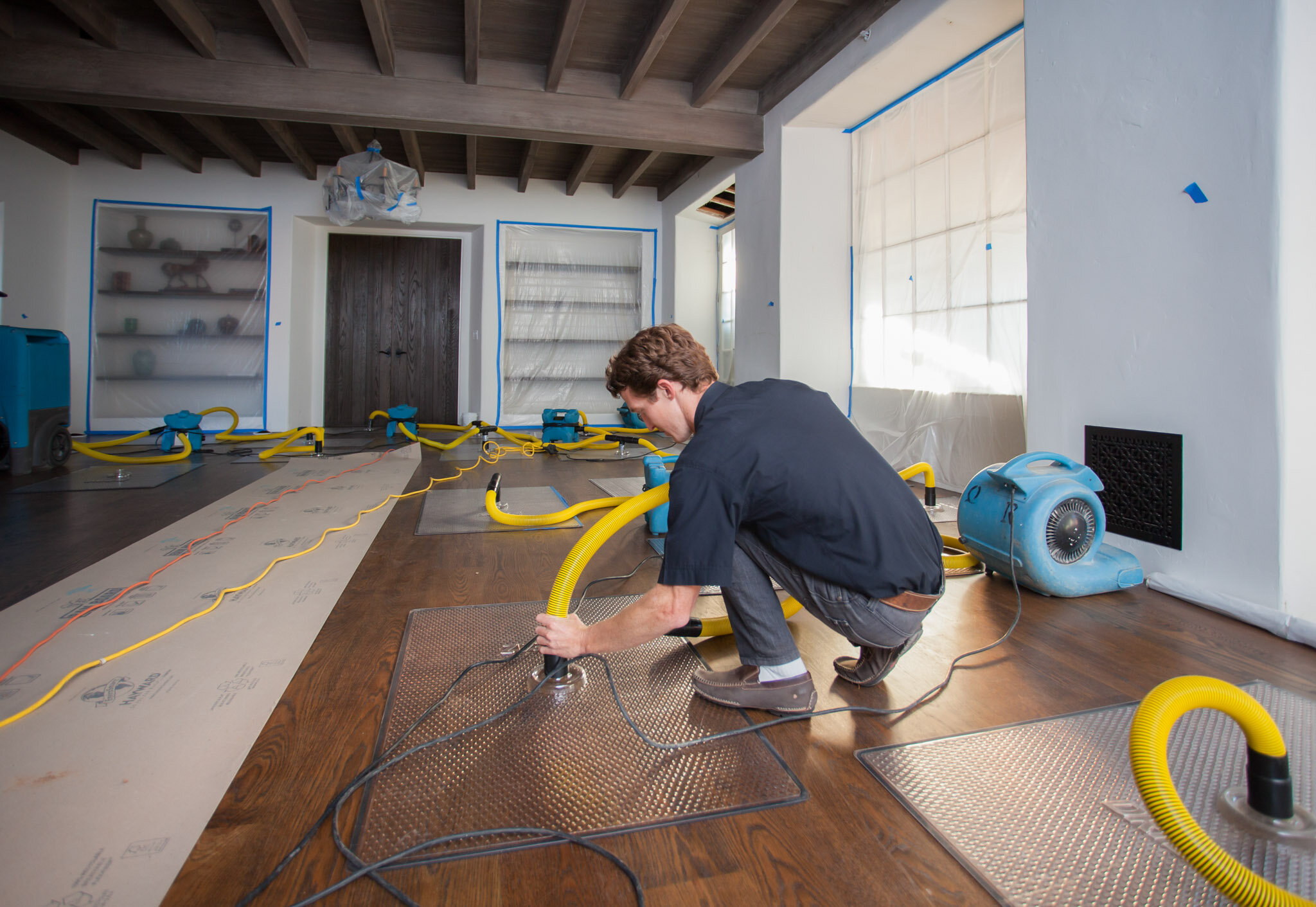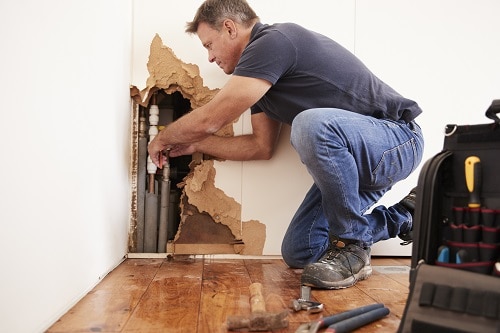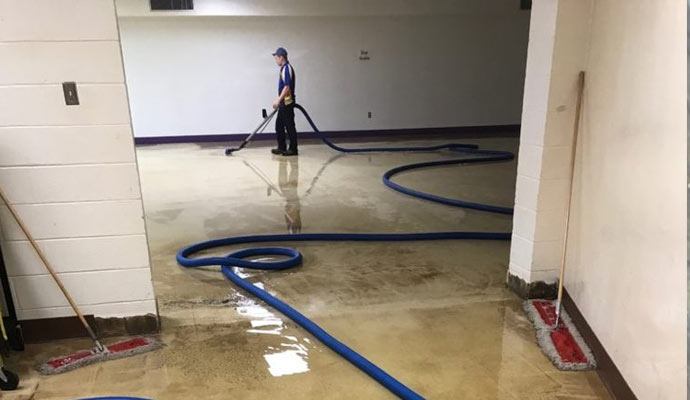Water Damage Restoration 101: Comprehending the Process and Cost
Water damage can strike unexpectedly, leaving homeowners in a state of complication. Comprehending the reconstruction procedure is vital for effective healing. From evaluating the damage to picking the appropriate provider, each step influences the overall result and cost. Aspects such as the sort of water damage and seriousness additionally play a significant function. What are the particular techniques made use of in repair, and how can one get ready for prospective expenses?
Types of Water Damage

Preliminary Evaluation and Examination

Water Removal Techniques
Adhering to the first assessment, efficient water removal strategies are used to mitigate damage and prevent further concerns. These techniques entail the use of customized devices such as industrial-grade vacuum cleaners and submersible pumps - Water Damage Restoration. The option of method depends upon the volume of water existing and the type of materials influenced. For standing water, completely submersible pumps are normally utilized for rapid removal, while vacuum cleaners are optimal for drawing out water from carpetings and upholstery. Additionally, progressed methods like water removal mats may be utilized for hard-to-reach locations - Water Damage Restoration. The goal is to eliminate as much water as possible, decreasing the possibility for mold and mildew growth and structural damage. Prompt and effective water removal is necessary in the overall water damage reconstruction process
Drying Out and Dehumidification Process
Once the water removal is complete, the drying and dehumidification procedure ends up being vital to recovering the affected location. This stage commonly employs industrial-grade dehumidifiers and air moving companies to properly lower dampness degrees. The dehumidifiers pull in damp air, getting rid of excess moisture, while air moving companies distribute air to increase dissipation. Monitoring devices is often used to track moisture and temperature level degrees, making certain ideal drying problems. The period of this process can vary depending upon the extent of the water damage and ecological variables. It is crucial to extensively completely dry all impacted materials, consisting of wall surfaces, floor covering, and furnishings, to avoid mold and mildew development and architectural damage. Correct implementation of this action is crucial for a successful repair result.
Cleansing and Sanitizing Damaged Areas
Once the drying out procedure is complete, a thorough first assessment and inspection of impacted locations is vital to determine contamination degrees. Reliable cleansing strategies and ideal items need to then be employed to get rid of particles and spots. Finally, sanitization and sanitation methods are important to ensure that damaging pathogens are eliminated, bring back the room to a risk-free condition
First Assessment and Inspection
Prior to starting any reconstruction efforts, a complete first analysis and assessment of the impacted locations are crucial for effective cleaning and sanitizing. This procedure includes identifying the degree of water damage, figuring out the resource of the water intrusion, and evaluating the materials influenced. Inspectors normally search for signs of mold and mildew development, architectural stability problems, and harmed possessions. The assessment also consists of examining dampness levels using specific devices to ensure no concealed water pockets stay, as these can cause additional difficulties. Documenting the searchings for is essential for intending the following action in the repair procedure. A comprehensive preliminary assessment enables repair specialists to devise a targeted strategy for efficient cleansing and sterilizing, eventually minimizing damage and health dangers.
Cleaning Techniques and Products
Reliable cleaning and sterilizing of water-damaged locations require a variety of products and methods tailored to the certain products impacted. For permeable surface areas like drywall and carpeting, removal techniques are vital to eliminate excess wetness, followed by deep cleaning with specialized cleaning agents. Non-porous products such as ceramic tile or metal can be cleaned up making use of commercial-grade cleaners that properly get rid of pollutants. Heavy steam cleaning is another reliable strategy, specifically for rugs and furniture, as it utilizes heats to get rid of microorganisms and mold (Water Damage Restoration). Furthermore, environmentally friendly items are increasingly prominent for their safety and security and efficiency - Water Damage Restoration. Inevitably, selecting the suitable cleaning methods and products not just ensures instant cleanliness yet additionally help in protecting against more damage and carcinogen related to water intrusion
Sanitization and Disinfection Techniques
When resolving water damage, appropriate sanitization and disinfection approaches are vital to ensure the safety and wellness of the affected setting. After initial cleansing, surface areas need to be treated with proper disinfectants to eliminate microorganisms, mold and mildew, and germs that thrive in damp conditions. Typical techniques include making use of EPA-approved chemical disinfectants, which can be used through spraying or cleaning strategies. In addition, ultraviolet (UV) light systems can efficiently disinfect areas by reducing the effects of microbes without severe chemicals. The selection of technique frequently depends upon the kind of materials impacted and the level of contamination. Ultimately, comprehensive sanitization not just restores a safe space yet also assists stop future wellness risks connected with remaining dampness and mold and mildew growth.

Fixings and Restoration Options
Assessing the damage brought on by water direct exposure is essential for establishing the suitable repair work and remediation choices. Property owners may encounter numerous concerns, including harmed drywall, deformed floor covering, and endangered architectural components. Relying on the level of the damage, fixings may include replacing areas of drywall, setting up brand-new floor covering, or strengthening structural beams. In cases of extreme damage, get more info total replacement of afflicted materials may be necessary. In addition, expert restorers often advise making use of moisture meters to examine covert wetness degrees before picking the best strategy. It is necessary to act without delay to avoid mold and mildew growth and more wear and tear. Selecting the appropriate choices not only restores the building yet likewise guarantees lasting safety and security and performance.
Elements Influencing Restoration Prices

The extent of water damage directly influences the remediation sets you back property owners can anticipate to incur. Elements such as the resource of the water, the duration of exposure, and the affected products considerably influence prices. As an example, clean water damage from a damaged pipeline is generally less expensive to recover contrasted to damage triggered by sewer. Furthermore, the degree of contamination determines the demand for specialized cleansing and disposal solutions, better raising expenditures. Geographical area additionally contributes, as local labor rates and accessibility of repair solutions can vary. Ultimately, the necessity of the response impacts costs; quicker interventions generally bring about reduce total costs by stopping additional damage. Understanding these factors is vital for house owners when estimating reconstruction prices.
The 3 primary types of water damage are categorized based on contamination levels: tidy water, gray water, and black water. A detailed first analysis and assessment are crucial actions in the water damage remediation process. For standing water, submersible pumps are commonly utilized for quick elimination, while vacuums are perfect for removing water from rugs and furniture. The degree of water damage straight influences the repair sets you back home owners can anticipate to incur. Tidy water damage from a damaged pipe is usually less costly to recover compared to damage created by sewer.